The spookiest, vibiest spots in the city's 'cemetery belt'
The dead tell no tales, but we will; travel the cemetery belt with us
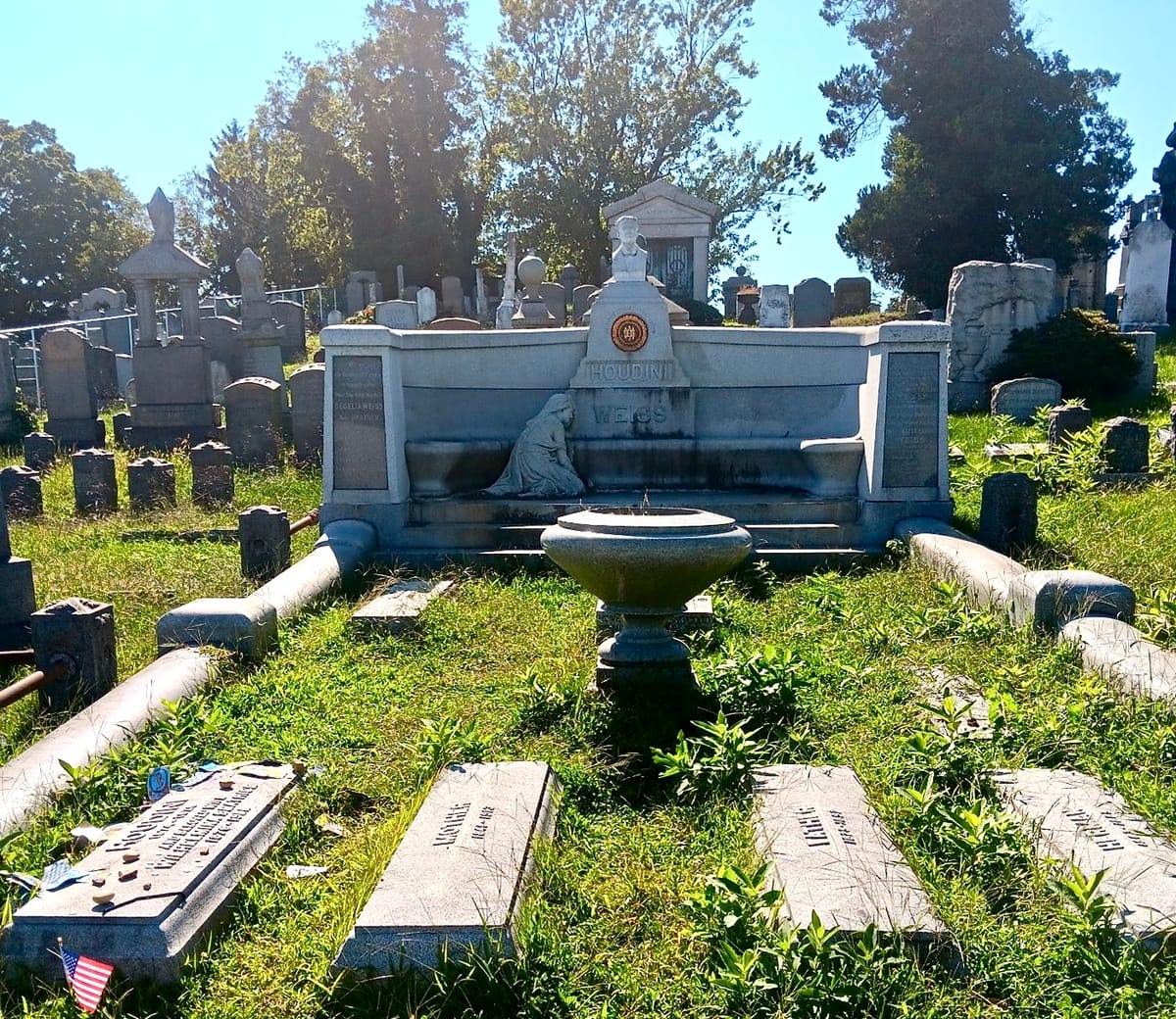
New York City has no shortage of cemeteries and famous dead people buried in them. Manhattan boasts the likes of Alexander Hamilton, Clement Clarke Moore and Preserved Fish buried across the island in its jam-packed graveyards and churchyards. But even more people are entombed in Queens and Brooklyn, both of which have more dead people than living people in their borders.
One of the largest cemetery sprawls in the city lies atop the Queens-Brooklyn border in an area called the “Cemetery belt,” created because of a loophole in an old law prohibiting a cemetery from taking up more than a certain amount of land per county. The workaround? Buy land on both sides of the county line and have an even bigger cemetery than if you’d built in the center of the county!
Free, airy, accessible, and open to the public, here are a few of the cemetery belt’s spookiest, vibiest graves to visit this Halloween season.
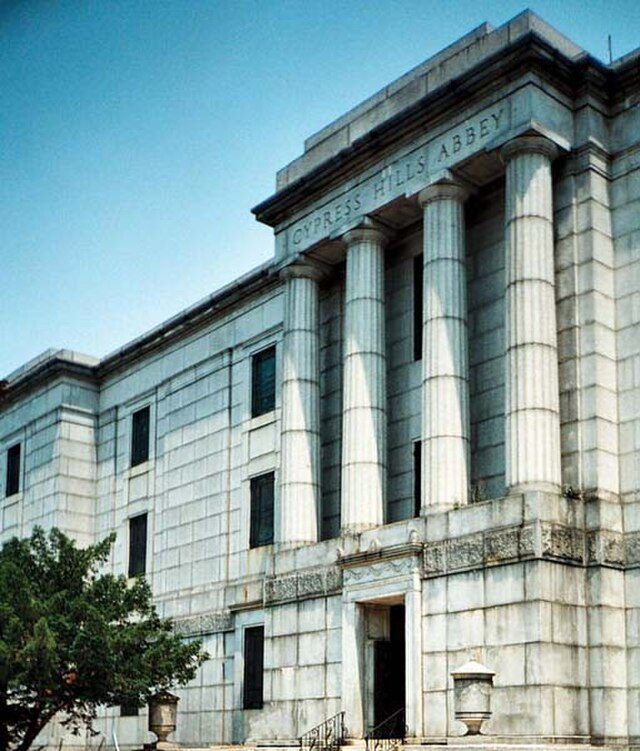
Cypress Hills Cemetery: The mothers of American spiritualism and the unembalmed embalmer
Cypress Hills, Maimonides, and Salem Fields Cemeteries are all next to each other, easily accessible from the J train at Cypress Hills. Cypress Hills Cemetery is one of Brooklyn and Queens’ largest, located in the Cypress Hills neighborhood of East New York. Their front office helpfully offers maps with the locations of their most significant burials. One of its prestigious “inhabitants” is Thomas Holmes, the father of modern embalming, who developed modern embalmment methods during the Civil War (Holmes himself asked not to be embalmed upon death).
Not far from Holmes’s grave are the Fox sisters, the mothers of American spiritualism. In the 1800s, the two younger sisters played a simple prank on their older sister, where they made her think their finger-rapping was being produced by ghosts. Fast forward years later, and they were celebrities kickstarting a whole new spiritual movement based on spirits and seances. Despite their admitting it was a hoax eventually, the movement lived on, as you’ll see later in the case of one Harry Houdini.
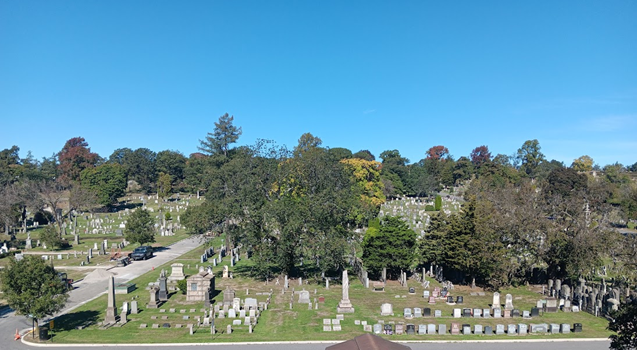
One of the cemetery’s greatest attractions is its massive mausoleum on the northern side of the Jackie Robinson Parkway. (Jackie Robinson himself is also buried close to the parkway that takes its name from him.) Mae West, one of Hollywood’s first major sex symbols, is interred in her family’s section of the mausoleum.
☠️ Don't let local journalism die! Become a member of The Groove today and you'll get access to bonus content, perks, deals and more!
To access her tomb, and the rest of the mausoleum, call the cemetery office, and they’ll send a guard to unlock the doors. From there, you’ll have free reign of all three floors of darkened tombs and the chapel, with only the dead and the stone eyes of ever-watching statues for company. Just be aware though, the statues aren’t the only ones with their eyes on you—you are on camera.
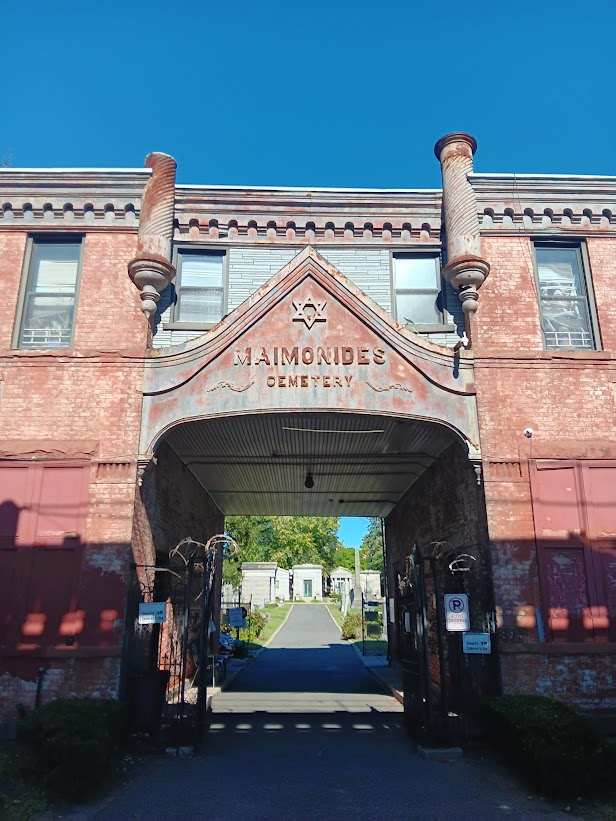
Maimonides Cemetery: Marilyn Monroe's star finder
Maimonides Cemetery is east of Cypress Hills Cemetery and is one of the many Jewish cemeteries in the belt. Maimonides is much smaller and requires an appointment to visit, but you can see some gorgeous vistas from the street and the subway on the J train.
Among its main “inhabitants” is Joseph M. Schenck, the Hollywood producer who catapulted Marilyn Monroe to stardom.
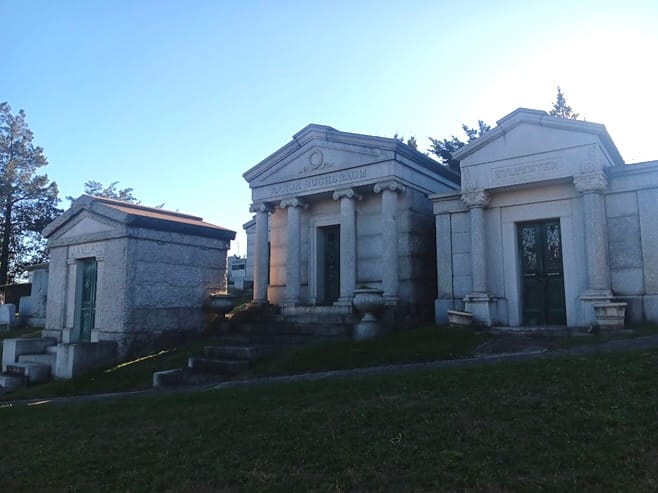
Salem Fields Cemetery: A Warner, a Fox and the Guggenheims
Going west instead of east of Cypress Hills, you will run into Salem Fields Cemetery. Smaller than Cypress Hills and with fewer graves and denser mausolea, Salem Fields is more manageable to visit.
If you’re a film buff, this one’s for you: William Fox, founder of the Fox Film Corporation and Albert Warner, co-founder of Warner Bros, are both buried here.
Also buried here are Richard Gottheil, founder of the first Jewish fraternity, and Solomon R. Guggenheim, founder of the Guggenheim Museum (among several other Guggenheims).
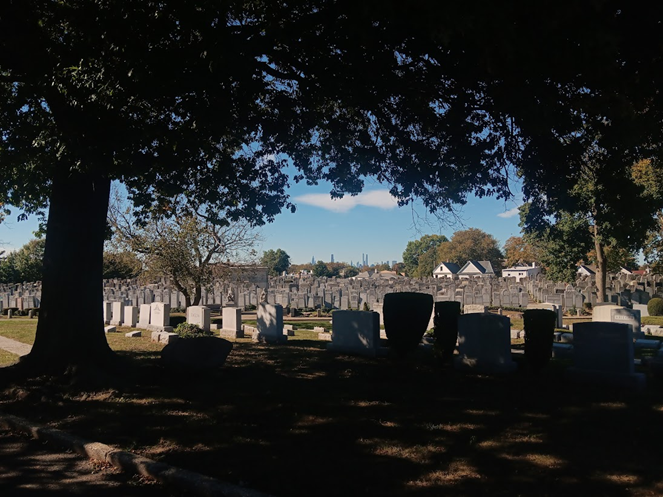
Mount Lebanon Cemetery: A gem in the belt
Mount Lebanon Cemetery is to the northeast of Cypress Hills on the Q55 line, and one of the perfect cemeteries for a day trip. Not too large, and with a friendly staff and rich history, Mount Lebanon is a gem in the belt.
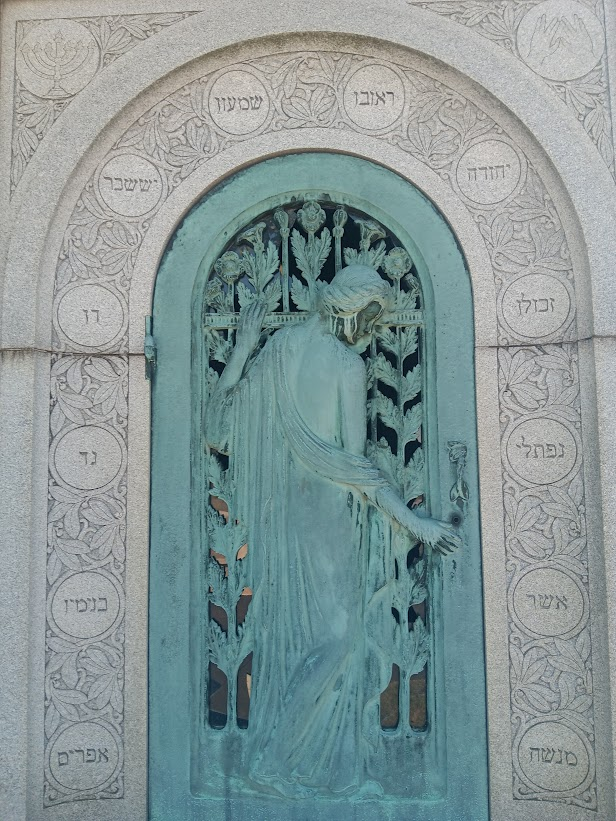
The sea of tombstones of the graveyard and the skyscrapers of Manhattan both stretch to the sky along the horizon.
Mount Lebanon also has numerous iconic mausolea, laden with ivy and bedecked with occasional statues.
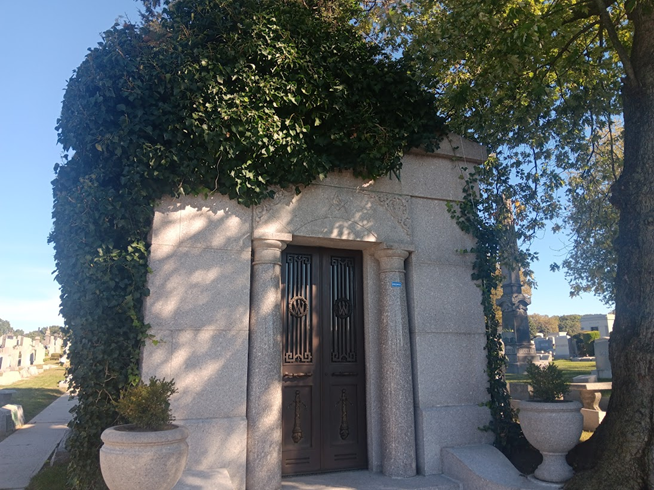
The graveyard has two entries, one by the largest mausoleum, and one by the office, where maps are offered free of charge.
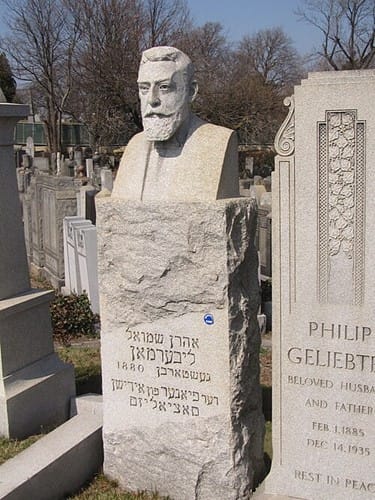
Mount Carmel Cemetery: Marx and socialism
Mount Carmel, right on the B13 line, is one of several Jewish cemeteries in the belt, having incorporated numerous other adjacent Jewish cemeteries.
Some of America’s most notable Jewish people are buried here, among them Sam and Minnie Marx, parents of the Marx brothers; Roger C. Carmel, Star Trek actor of great renown; and Aaron Samuel Lieberman, father of Jewish socialism, for all you lefties out there.
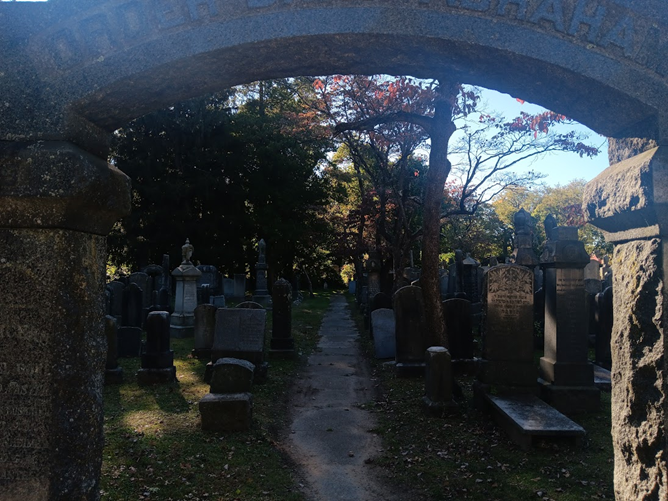
Beth El Cemetery: A step back in time
Beth El Cemetery, also on the B13 line, is yet another Jewish graveyard with some of the most gorgeous vistas in the city. It is small, with none of the lengthy jaunts found in Cypress Hills or Evergreens (we’re getting there). Yet the graveyard, with its mosaic of branches hugging the mausolea and narrow alleys among the tombstones, feels like a step back in time.
Here, you forget you’re in the heart of the most populous borough in the largest city in the country. Here, among a stony ocean of silence broken only by the footsteps of the diligent groundskeepers, is a true resting place, a slice of European quiet brought to New York. The paths are narrow, few roads for cars run through it and the Gothic design of the stones and buildings is like something from the Pere Lachaise or Highgate Cemetery.
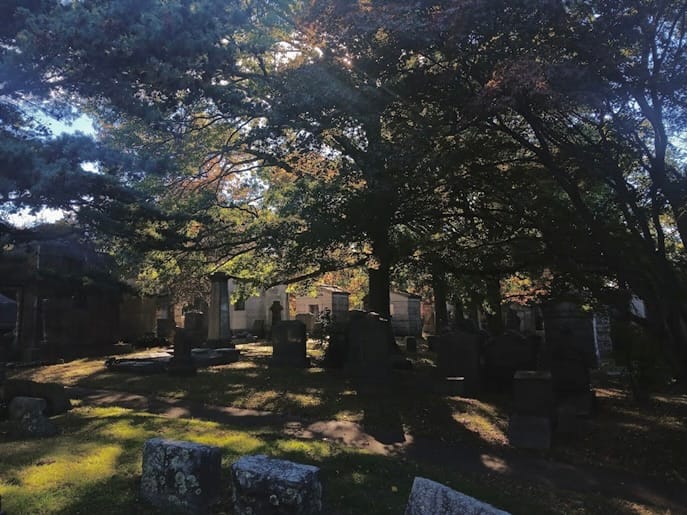
Among the celebrities interred here is Edward G. Robinson, renowned for playing dozens of bloodthirsty gangsters on the silver screen in the 1930s and 1940s (“Nyah, see?”) alongside numerous other impressive roles. Robinson is interred in his family’s mausoleum, sitting in a circle of mausolea nestled beneath the rapidly-coloring trees.
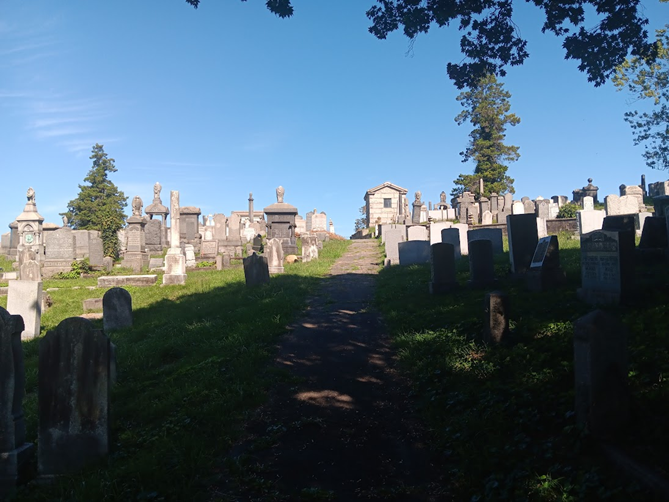
Machpelah Cemetery: Houdini's final escape
Right next door is another Jewish cemetery, Machpelah Cemetery, which takes its name from an ancient burial site in Jerusalem. Although numerous Jewish notables are buried here, among them many Civil War and World War I veterans, the graveyard’s most prominent burial is located right on the bustling Cypress Hills Street thoroughfare.
Its most famous resident is Erik Weisz, better known as one Harry Houdini, who himself died on Halloween 1926. One of the most famous escapologists of all time, Houdini regularly broke out of locked-up prisons, indestructible shackles, and unopenable milk cans. Houdini has yet to escape his grave, presumably, though it has never been reopened to see if he’s still in there.
However, there was talk of exhuming him in 2007 to see if he had been murdered by spiritualists. Aside from destroying handcuffs, Houdini also made a career disproving spirit mediums and revealing them as frauds; though Arthur Conan Doyle, inventor of Sherlock Holmes, believed Houdini was secretly in league with dark spirits and suppressed the power of other mediums for his own amusement.
Houdini died on Oct. 31, 1926 from peritonitis, exacerbated by appendicitis. The Society of American Magicians holds an annual séance every Halloween to try to contact Houdini. Though they previously performed an annual ceremony honoring Houdini on Halloween, alas, they have been barred from holding it at the cemetery for decades. The cemetery’s faculty cited rising vandalism around the time of the ceremony every year, and decided to close the cemetery every Halloween to discourage vandals.
Among the cemetery’s sadder stories, his wife, Bess, is not buried with him. Though she wanted to be reunited with him in death, her Catholic family refused to let her be buried in a Jewish cemetery, and instead interred her in Gate of Heaven Cemetery in Westchester County. To this day, the two remain separated in death.
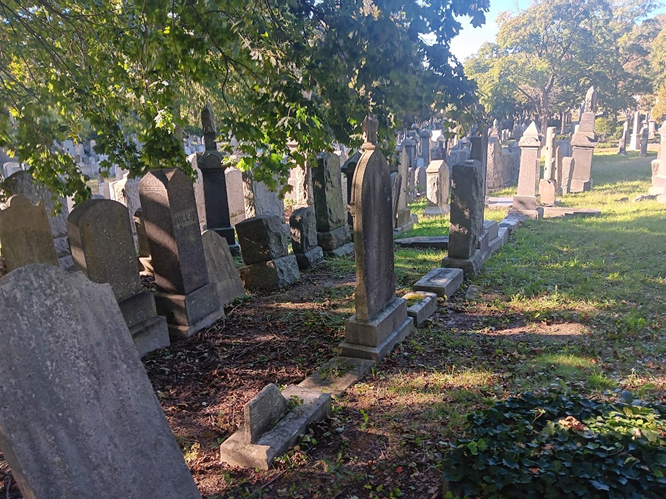
Another sad story is the cemetery’s sorry state. While Beth El is well-kept and accessible, Machpelah is overgrown and disheveled, with numerous fallen grave markers left to lie where they fell, empty spots where gravestones once sat, and overgrown, illegible mausolea signage seen everywhere. Even some members of the Houdini family have had their stones removed, and the bust atop Houdini’s grave has been vandalized numerous times.
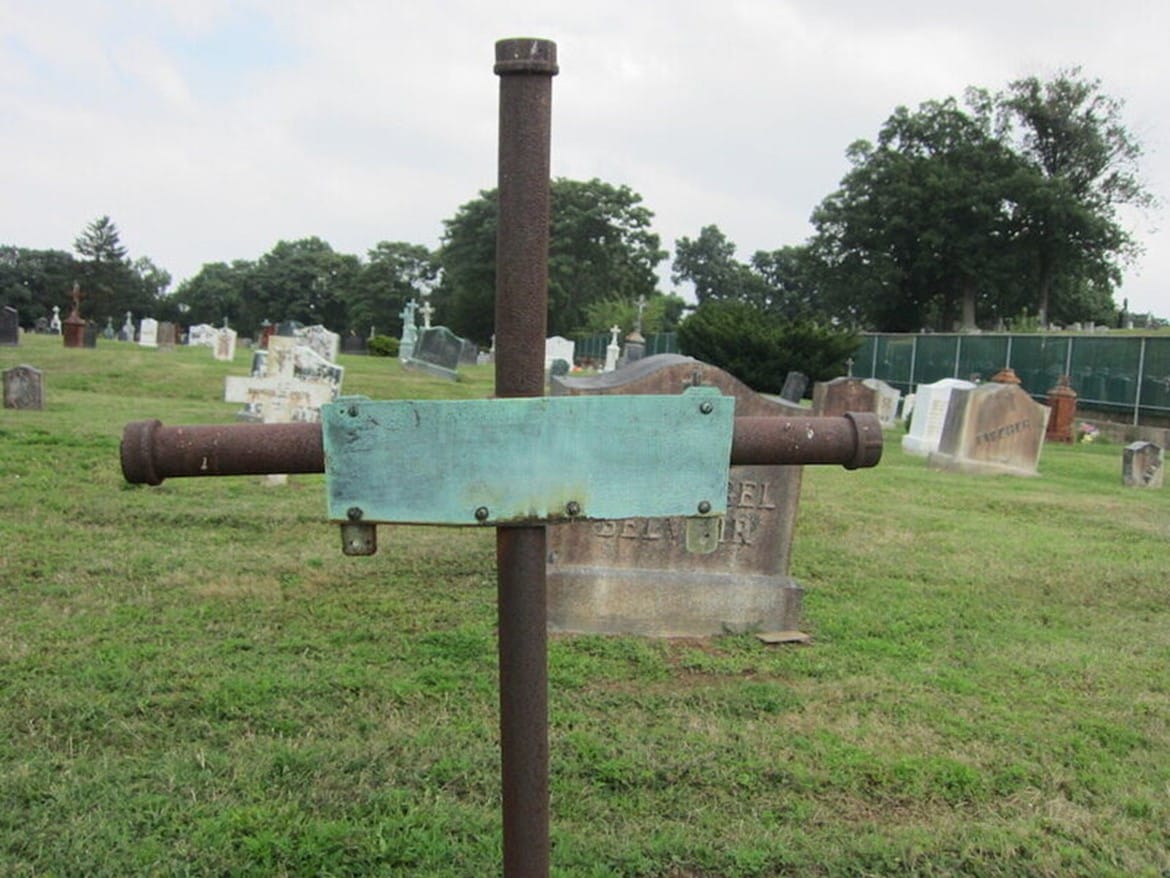
Most Holy Trinity Cemetery: Stolen tombstones
Most Holy Trinity Cemetery is a Catholic cemetery originally built to serve the local parish of Most Holy Trinity, now Most Holy Trinity-St. Mary’s. Trinity is one of the most beautiful cemeteries in the belt, in part because of its unique grave markers. The 1800s—when the graveyard opened—were a time of big, brash monuments for the wealthy, some going so far as to model their tombs on the Pharaohs of Ancient Egypt, while the poor were left with tiny stones that said “MOTHER” and “FATHER.”
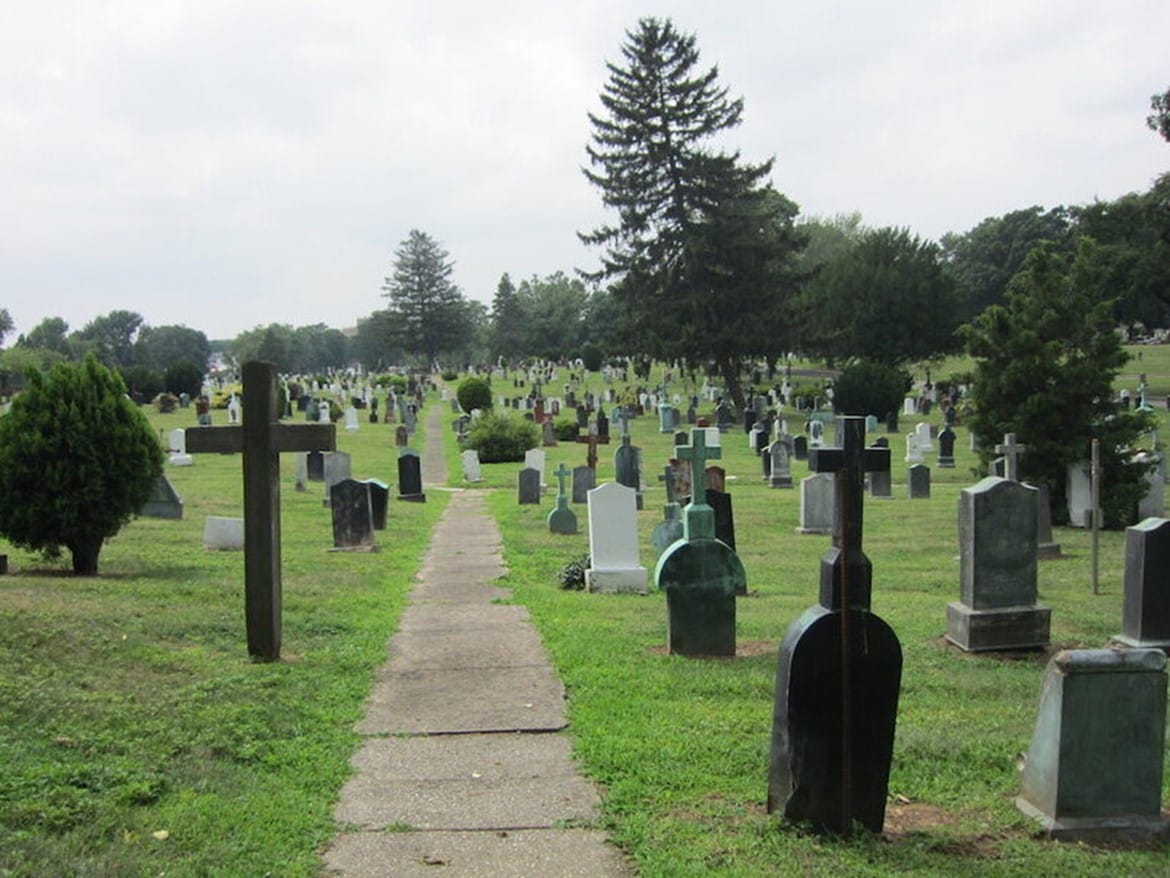
The parish of Most Holy Trinity decided to prohibit ostentatious stone markers in lieu of simple wood and metal monuments, meant to rust and rot away, as a reminder all are equal in death. Not all metals are equal, however, leading to the creation of some hauntingly beautiful angels and saints wrought from oxidizing copper and white-hot tin.
However, the true horror of Most Holy Trinity Cemetery is human greed. The very same metal memorials that made the cemetery so unique made it a target of crooks; over the past few months, a gang of unknown thieves has made off with over hundreds of different tombstones, likely to sell as scrap metal. While the solace of visiting a loved one’s grave is priceless, copper goes for three dollars a pound in this economy. The crooks have yet to be apprehended, even months after their crimes were discovered. Now, barbed wire sits atop the cemetery walls, a private security firm patrols the pathways, and photographers (like yours truly) are barred from the grounds. Still, it makes for a lovely vista from the nearby Wilson Avenue subway station, which you can take the L train to.
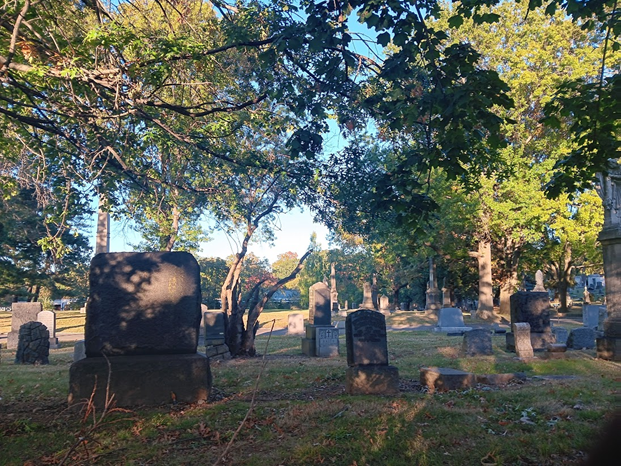
Cemetery of the Evergreens: A notorious censor
If you want a more peaceful cemetery, visit the Cemetery of the Evergreens, the westernmost graveyard in the belt, located close to the Bushwick Avenue-Aberdeen Street L train station. One of the city’s quietest and flattest cemeteries, this nondenominational graveyard features numerous prominent people of color, such as Thomas Wiggins, the blind pianist and composer; Bill “Mr. Bojangles” Robinson, the highest-paid actor of color of his time; and Lester Young, jazz tenor saxophonist and Count Basie associate.
One of the greatest horrors of the cemetery, however, is its resident censor, Anthony Comstock. Aside from relentlessly suppressing the birth control-by-mail-industry, Comstock had numerous journalists arrested and jailed for irreligiosity, persecuted sex educator and angel-dater Ida Craddock, and forced Madison Square Garden to clothe the naked statue of the Roman goddess Diana that sat atop the arena’s roof. (The garments were quickly blown away in the wind, baring Diana’s nether regions to the city’s morally bankrupt hordes once more.)
These aren’t all the cemeteries in the belt, but they’re all the ones I made it to before my deadline. Other cemeteries include Mount Judah Cemetery, Beth Olam Cemetery (also known as Fourth Shearith Israel Cemetery) and Union Field Cemetery. Regardless of where you end up going, it’s important to remember to be respectful, both of the dead buried there and any other mourners and cemetery visitors. Be sure to follow all cemetery rules and cooperate with cemetery personnel, and beware of any wildlife you may come across. Also, check closing times so you don’t get locked in—even if you’re into that sort of thing, trespassing is a crime.
Besides, who knows: Maybe somebody will be writing an article about how people simply must visit your grave one day, and you’d want them to be respectful, wouldn’t you?
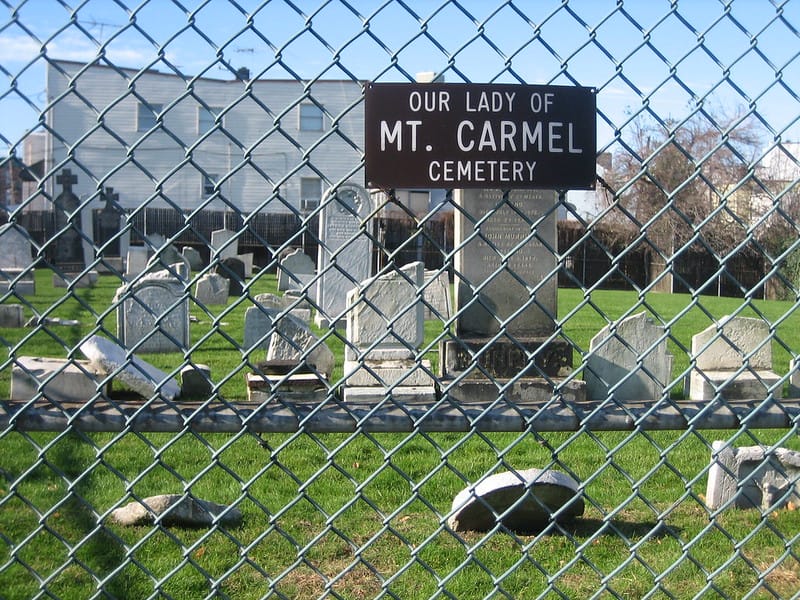

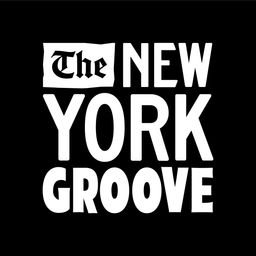
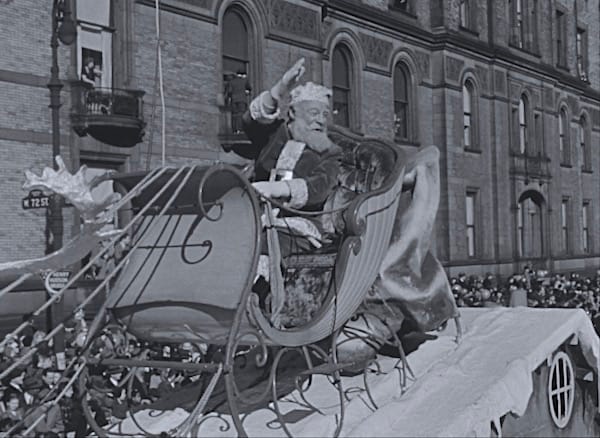
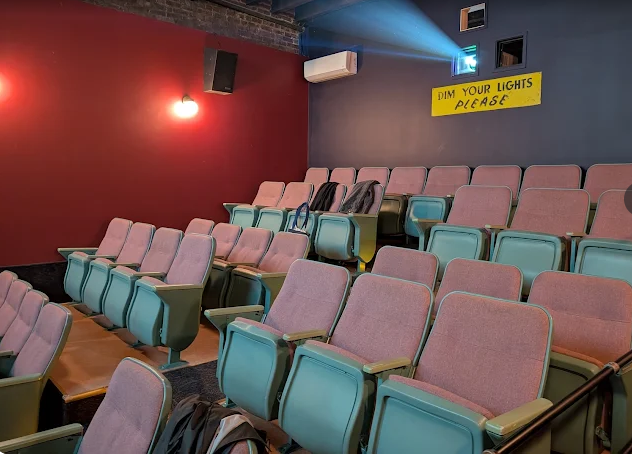
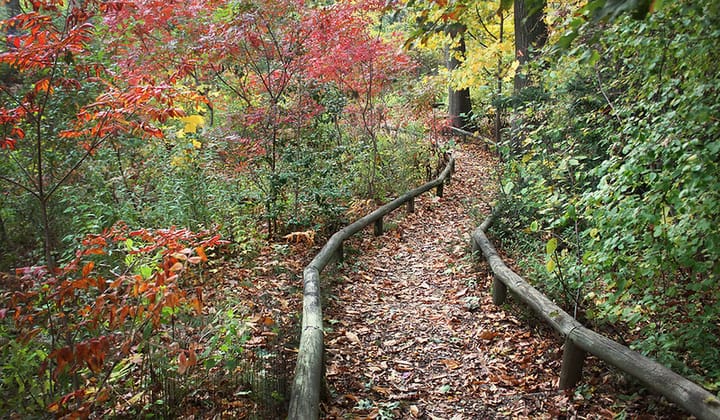
Comments ()